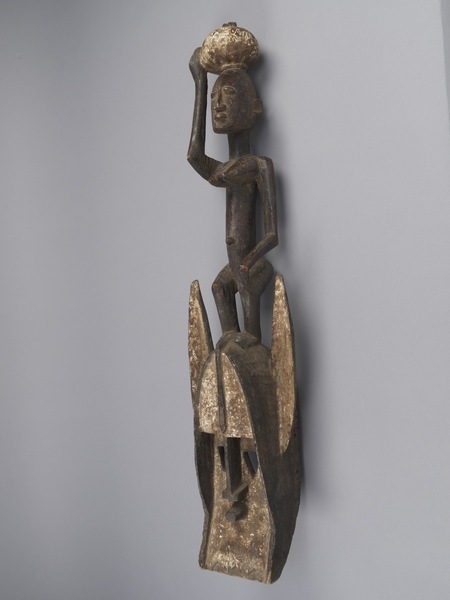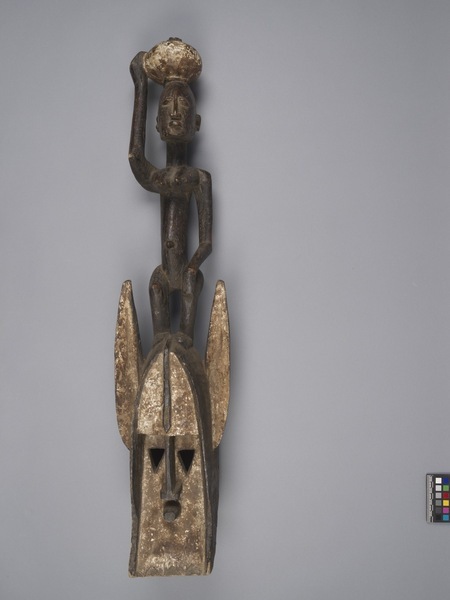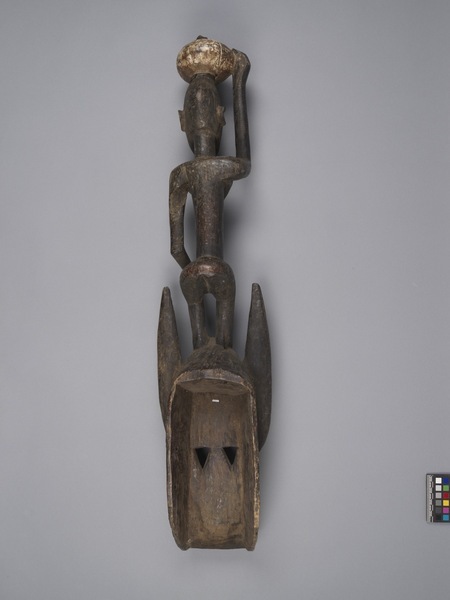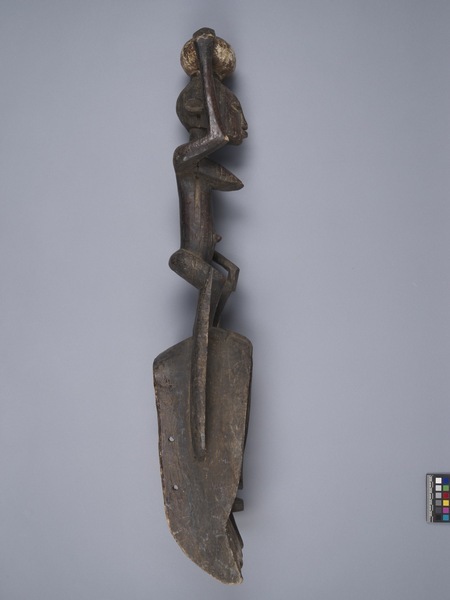Mask Item Number: 3420/21 from the MOA: University of British Columbia




Description
Carved and painted mask. The face mask section has a sunken lower face with a strong brow ridge, two triangular cutout eye holes, a thin nose and a small pouted mouth. Large pointed ears extend up and the forehead is decorated with a single raised line down the centre. The superstructure is a female figure with projecting breasts, square shoulders, arms bent at the elbow with one hand on her leg and the other holding a ceramic vessel on her head.
History Of Use
The figure commemorates the first woman, known as Satimbe, who discovered and wore a mask. Her mask was stolen by her husband who prohibited females from ever wearing them. It is also associated with the Yasigne, “sisters of the mask”, females born during the performance of the Sigi festival, a three-month long festival that seeks to honour ancestors every sixty years. The Yasigne are the only women allowed to approach the Satimbe masks. Masquerades involving this mask usually take place during the dry season festival, which acknowledges death and celebrates life and fertility. Satimbe masks are made by blacksmiths using an adze and a single piece of wood; often from the toglo tree. The Dogon believe that trees contain nature spirits, so they carry out rituals before a tree is cut to allow the spirit to be transferred to a new vessel.
Item History
- Made in Mali during 1950
- Owned by Richard Tchuemegne before February 5, 2020
- Received from Richard Tchuemegne (Seller), Michael O'Brian Family Foundation (Funding source) and Museum of Anthropology Exhibitions Budget (Funding source) on February 5, 2020
What
Who
- Culture
- Dogon
- Previous Owner
- Richard Tchuemegne
- Received from
- Richard Tchuemegne (Seller), Michael O'Brian Family Foundation (Funding source) and Museum of Anthropology Exhibitions Budget (Funding source)
Where
- Holding Institution
- MOA: University of British Columbia
- Made in
- Mali
When
- Creation Date
- during 1950
- Ownership Date
- before February 5, 2020
- Acquisition Date
- on February 5, 2020
Other
- Condition
- good
- Accession Number
- 3420/0021